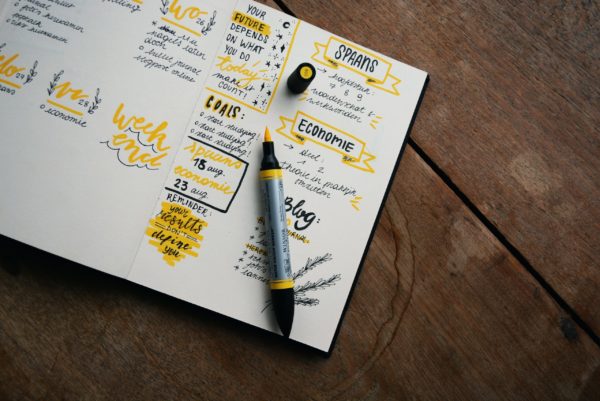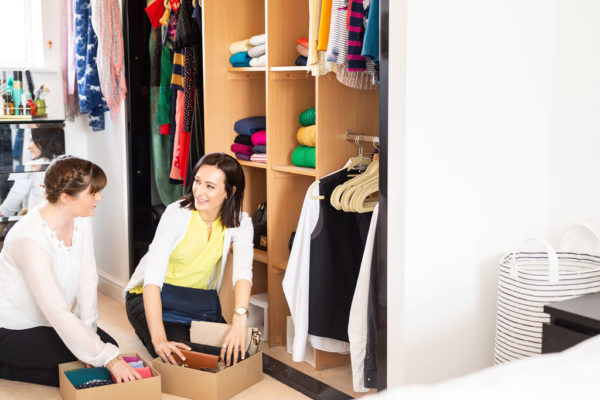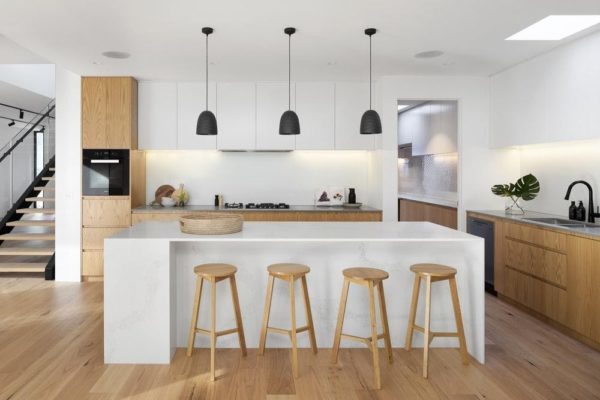A Tidy Mind Professional Organisers are experienced when it comes to helping clients declutter their homes. In this blog post, we share a comprehensive decluttering checklist for you to use whenever you need tips or advice.
Declutter Your Home Checklist
Before Your Start Decluttering
- You may need to check out local recycling options
- You may need to plan how you can donate and recycle with minimum hassle i.e. recycling banks, supermarket food collection points, battery recycling etc.
- Do you need to check whether you can donate to certain charity shops? Do you need to order bags from Oxfam for clothes donating? Or use a donating service such as the British Heart Foundation.
- Do you need to dedicate bags or boxes for selling services such as Stuff You Sell or Vintage Cash Cow.
- Set up your space. Have some bags for donation, recycling and rubbish ready. Consider having a box ready as an ‘action box’ for physical items (such as items to return to a friend).
- It’s useful to have a notebook ready to write down actions which become apparent.
Top Tip To Declutter Your Home: In general focus on decluttering first, then organising so you know what needs to be organised.
General Tips For Categorising
- If there is a lot of floor space or a clear area (such as a bed), it may work best to declutter by categories i.e. gather all the books in a pile and go through each one.
- If your home is quite full, there may not be enough room for this so you will have to take a more random approach and go room by room. Try to categorise a little if you can i.e. in a kid’s bedroom, go through the toys first, then books, then clothes etc.
- Declutter with your client category by category. Try to finish one before starting the next.
- Examples of large categories: children’s toys, paperwork, kitchen equipment, clothes etc.
- If a category seems too big, you can subcategorise e.g. in a kitchen, start by grouping together baking equipment, then herbs & spices and so on.
- Consider using post-it notes and a sharpie to make a note of your categories (the post it can be stuck on the floor or wall).
- As a temporary measure, you might use post-it notes to label drawers, cabinets or shelves to note what items will be stored there. This can help if you’re reorganising a kitchen as the notes can be swapped and changed if you change your mind on assigned homes.
Questions To Ask Yourself When Decluttering Your Home
- Is this item fit for use?
- Have you used it?
- Does it add value to your life?
- Do you own something else that fulfils the same role?
- How does it make you feel?
- If you discarded it, how would it make you feel?
- If you knew it was going to a good cause, would it make it easier to let go?
- Will this item help me accomplish things in my work or enjoy my life?
- When was the last time you wore/used this?
- Will you use it in the next year?
- If it’s broken, is it worth fixing?
- If you moved, would you take it with you?
- Would you buy it if you saw it in a shop today?
Decluttering Checklist – Room By Room
Loft
- If you have one of these, this can be a great place to start. If you declutter and make space here, then you have room to put other things from other parts of your space that you decide to keep.
- Make sure your loft is safe if you are going to work up there. Keep your phone on you if you’re alone in case of accidents and falls.
- If you need more storage for your loft, good quality plastic boxes work well and can stack. You may also want to consider sliding cupboards which can be fitted in front of sloping walls. Or shelving to make use of wall space.
Eaves Storage
Don’t forget to utilise this as there can be more room than you think. They key is to avoid over-stuffing these spaces and storing things that are in the same category together.
Storage Cupboards
- If you have an airing cupboard or an under-the stairs cupboard, then it’s great to utilise it. These spaces can be magnets for clutter though.
- If you really want to declutter your home, empty these completely and go through everything. Then start from scratch with an empty space before you put things back.
- Cupboards that are a uniform shape often work best with simple open shelving at varying heights. That way you can fold towels or bedding on the shelves for examples. Or you can add boxes for smaller items with labels.
- Cupboards that have sloping walls and are triangle shaped can be more difficult to utilise. We recommend that you consider built in storage for these areas.
Garage – step by step decluttering checklist
- If possible, get a piece of tarpaulin and lay it outside. Gather up everything (yes everything!) from the garage and place it there.
- Use a stick to clear the cobwebs from the ceiling and give the garage a good sweep out.
- Do a “quick toss” of things which are broken, useless or out of date and load the car for a tip run. Most recycling centres safely dispose of gas canisters, paint less than 10 years old, metal, wood, cardboard, soil, rubble, paper, broken electrical items, glass bottles, batteries, white goods and light bulbs.
- To prepare for the ‘deeper declutter’, categorise possessions into groups of similar items. Ask yourself if you have duplicates and can declutter down to one. Will you really use each and every item in the future?
- Bag up charity shop donations. For items that you no longer have a use for but which are donatable, you have a few options besides taking them to the charity shops. Some recycling centres have ‘reuse’ sections or you can think about whether animal shelters, homeless refuges or refugee camps could use your items
- Be wary of holding on to too much with the intention of selling it – you don’t want it to still be there months of years down the line.
- Think about storage. Use (labelled) plastic boxes not cardboard ones and use the wall space as much as possible with shelving. Screws and nails can be stored in smaller containers on the shelving to keep everything off the floor. A peg wall is also useful in order to hang tools.
Wardrobe – declutter your home checklist
- Consider dividing the clothes into categories i.e. all jeans together etc and look at each in turn.
- Accessories, make up, hair products, jewellery etc can also be part of this and can be dealt with by category
- If you have very limited space, they may need to pack out of season clothes away. Or just packing away holiday clothes i.e. flipflops, beach wear, ski wear.
Paperwork – decluttering checklist
Consider decluttering the following:
- Duplicate bank/credit card statements from a joint account. Better still opt into paperless billing online.
- Letters that are for info only. Encourage them to read the info and put any dates into their diary
- Charity requests (unless you know they regularly increase your donations)
- Take away menus from any take-aways you have and never will use or that have online menus.
- Any other info that is also online
Suggested Sorting Method for Decluttering Paperwork
When sorting paperwork, start by having a pile of plain A4 paper and a black sharpie plus a recycling bag, a shredding bag, rubbish bag and an ‘action box’.
Go through papers piece by piece and making the following decisions:
*Recycle *Shred *File *Action now Also potentially have a ‘to Digitise’ pile
Kitchen – declutter your home checklist
- If there is ample floor space, it’s a good idea to empty the storage completely and lay everything out on the floor (ideally on a tarpaulin or other cover) Then categorise items and declutter category by category.
- Consider whether you can alter the shelving to different heights to help you organise things on them more logically.
- Contain smaller items where possible i.e. snacks, kids’ snacks, baking items, vitamins, medications, cloths, tea towels. Label if something is on a high shelf or you can’t see the contents. Inter Design storage is ideal for kitchens (find on Amazon).
- Remove packaging food as this will save space and look aesthetically better.
- Decant cereals/rice/pasta into containers if possible as this reduces spillages and looks better.
- Aim to remove everything from the surfaces apart from daily used items like kettles etc. Some people even keep choose to keep a toaster in a cupboard if it isn’t used daily.
Children’s Spaces – declutter your home checklist
- Decide whether you should work on children’s spaces with or without the child. As a general rule, children over the age of 8 years should be involved in the process.
- Check the age appropriateness of toys
- Check for missing pieces or over complicated assembly as this may help with decision making
- Take a blank piece of paper to check whether pens work
- Suggest certain toys/games which need parental supervision are kept out of reach of children (lots of pieces, messy, delicate etc)
- Make sure toys are easy to put away (simple sliding drawers or boxes)
- Consider separating into categories i.e. jigsaws, vehicles, dress up, instruments etc.
- Discuss ongoing habits for children’s areas. This is a heavily used space where some ‘tidy up time’ will be required on a daily basis. Suggest that the child is involved in the tidying up process at the end of each day.
Habits or Routines to Maintain a Clutter-free Space
No declutter your home checklist is complete without a nod towards maintenance. Consider adopting some of the below habits to help you:
- Put items back in their home after use
- Store it where we use it
- Don’t delay the decision/Do it now!
- Put the dishwasher on after dinner
- Empty the dishwasher before bed
- Give everything a ‘home’
- Put it back in it’s place
- Emails: Do, Delegate, Defer, Delete, File
- Remove packaging from shopping before putting it away
- Unsubscribe from unwanted emails immediately
- Block marketing calls immediately
- Delete unwanted images from phone straight away
- Refuse a receipt or hanger in the shop
- Pick outfit for the next day and lay it out ready
- Put dry clothes away immediately (or in the ironing pile)
- Keep change for parking/trolley in the car
- Make lunch for the next day whilst cooking dinner
- Hang keys on a hook upon entry into the home
- Exercise a ‘purchase pause’ before buying an item.
- Spend 5 minutes planning the next day
We hope you can make use of our decluttering checklist. Remember that decluttering your home can take time and it’s a journey. You don’t have to rush and you can enjoy the process. So be kind to yourself as you move through the project.
If you need help to declutter, we work with clients in their homes and virtually. Check out the areas our professional organisers cover or the homepage for Professional Organising FAQ.




